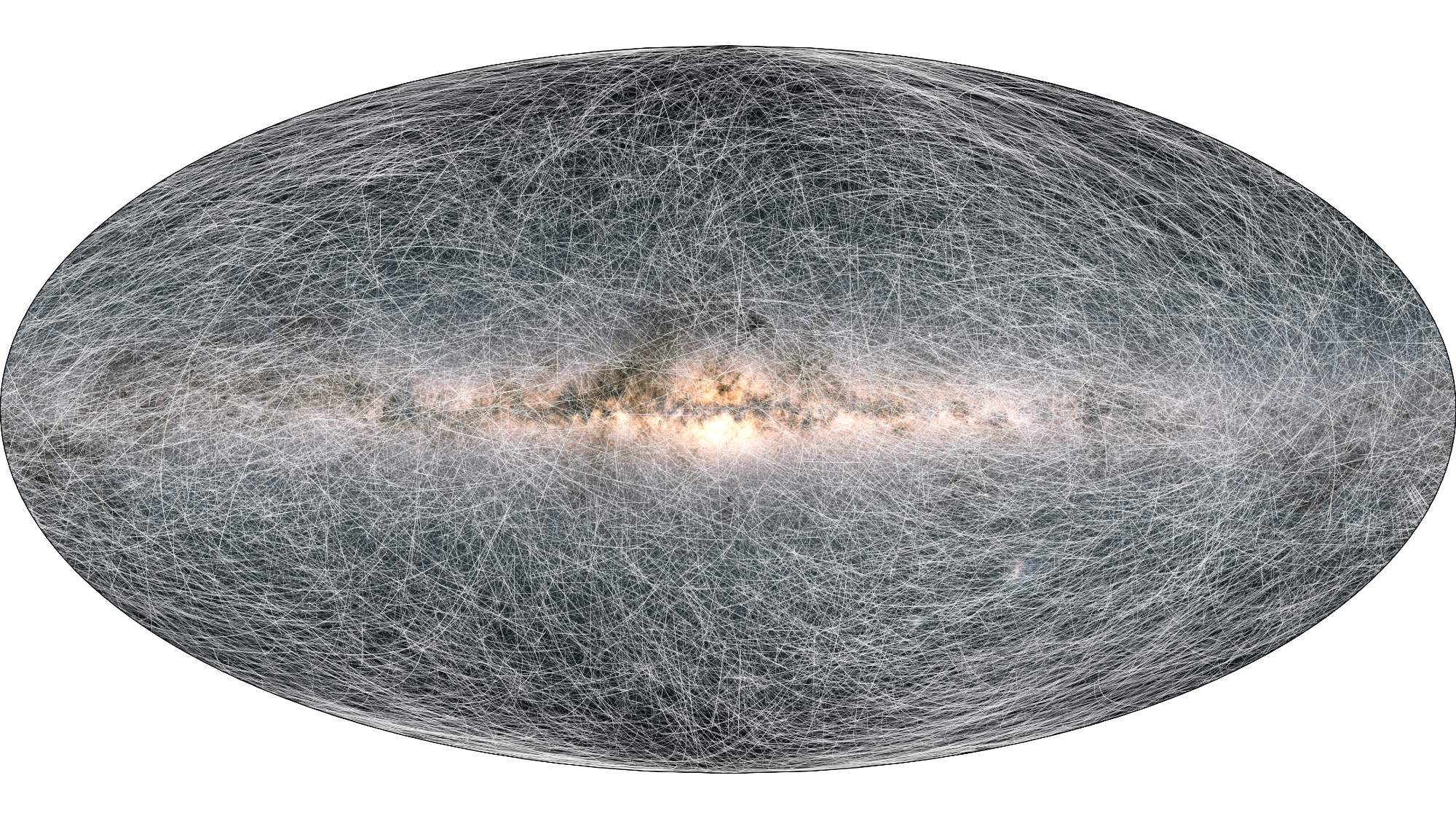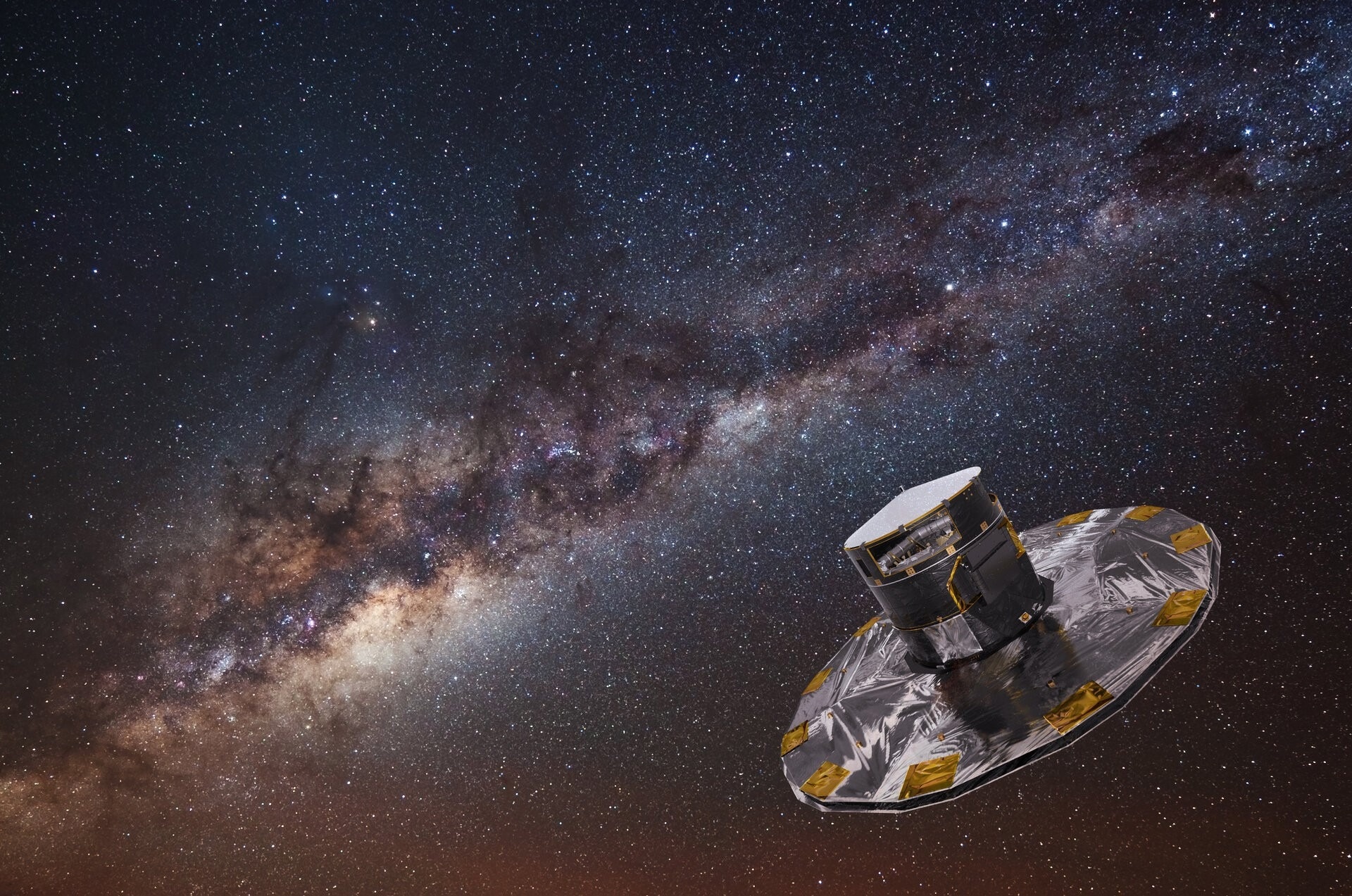With the third release of data from the Gaia satellite, astronomers have hinted at phenomena such as star quakes and “stellar DNA” that can be used to track the evolution of galaxies.

An image of the Milky Way created using Gaia data shows our galaxy in stunning detail. Image Credit: ESA/Gaia/DPAC
The Gaia mission launched in 2013 by the European Space Agency (ESA) has been mapping the Milky Way in unprecedented detail. Now, the flying saucer-shaped satellite has released its third catalog of data, collected with the aid of its dual-field view telescope and billion-pixel camera, providing astronomers with a colossal amount of new information about our galaxy.
Gaia’s operating team says that the mission has managed to identify 2 billion stars in the Milky Way — each of which has been visualized an average of 50 times. The data collected includes the position, speed and direction of motion, brightness, temperature, and composition of these stellar bodies.
As undeniably impressive as this is, it shows how much is left to do for the satellite as this is still only 1 percent of the total stars in our galaxy.
Not only does Gaia continuously survey and observe stars, it has also been collecting data concerning extrasolar planets outside the solar system — exoplanets — and distant galaxies. Since the launch of Gaia nine years ago, the number of cosmic objects observed by humanity has increased by a factor of 10,000 while the accuracy of those observations has improved by a factor of 100.
This is clearly a lot of data to process, requiring a team of over 500 researchers based predominantly across Europe.
This approach is paying off, with this release alone pointing to new information regarding “starquakes” and “stellar DNA” that can help track the evolution of galaxies.
What is Gaia?
The Gaia space satellite is likely not as familiar to most as something like the Hubble Space Telescope and the James Webb Space Telescope (JWST) launched in December 2021, but this does not make its mission any less fascinating.
At the time of writing, Gaia data forms the foundation of the majority of papers written about the Milky Way. The ambitious mission of Gaia is to create a 3D model of the Milky Way, revealing its composition and evolution.
The way Gaia operates differs from other space-based telescopes in that rather than observing targets one at a time, Gaia sweeps the whole sky repeatedly from its position 93,000 miles from Earth and the stable Lagrangian point (L2).
Previous Findings from Gaia: New Milky Way Disk Identified Using LAMOST-Gaia Data
Further, unlike Hubble and JWST which take spectacular images of the cosmos, the role of Gaia is to determine distances between cosmic objects. From these distances, and from other qualities such as luminosity, astronomers can use the laws of physics to determine other characteristics such as their motion through space — a practice called astrometry.
Determining these trajectories helps scientists determine the evolution of galaxies and the Universe as a whole. Thus, the science conducted by missions like Gaia has helped develop a rapidly growing field within astronomy and cosmology called galactic archaeology.
When Were the Previous Two Gaia Releases?
Gaia’s first data release occurred on September 14, 2016, and was built from data collected during its first 14 months of operations up until September. The data immediately represented the most detailed map of the Milky Way ever created at that time.
The release featured the position and brightness of over 1142 million stars and the distance and motions for more than two million of those. As well as serving as a good test of Gaia’s capabilities, researchers used the data to conduct a study of open stellar clusters — groups of young stars that were born together. Some of these 400 studied clusters were at a distance of 4,800 light-years from Earth.
The first data release also focused on 3194 variable stars — which shrink and swell rhythmically causing changes in brightness — many of which are located in the Large Magellanic Cloud, a galactic neighbor of the Milky Way.

An illustration of Gaia in its position 93,000 miles from Earth as it observes the Milky Way. Image Credit: ESA/Gaia/DPAC
The second Gaia release occurred on April 25, 2018, and contained high precision measurements of nearly 1.7 billion sources. The release was based on 24 months of Gaia operations between 25 July 2014 and 23 May 2016.
What has been the most exciting thing about these two data releases is the research projects that have sprung from them. In fact, it is almost impossible to explain just how many discoveries have spiraled out of this mission.
These things have included objects and events like Einstein crosses — illusions in which stars appear at multiple points in the sky due to the distortion of spacetime by very massive objects — to strange flaring stars, active galactic nuclei powered by black holes, and nova explosions.
Starquakes: What’s New in This Gaia Release?
The third Gaia release includes a wealth of data — collected between 25 July 2014 and 28 May 2017 — on binary systems and transient stars. Additionally, it includes radial velocities for over 33 million stars, a five times increase on Gaia release 2.
What is exciting about these observations of these stars and their rotations and pulsations are new discoveries about their change in frequency.
As well as seeing the usual shrinking and swelling of stars periodically, Gaia has observed a different type of vibration — described by researchers as “more like large-scale tsunamis.”
These oscillations are non-radial, causing the star’s surface to move as it rotates, and are thus tough to spot. This results in cooler dark patches and periodic changes in the brightness of the star.
The third Gaia catalog has also enabled researchers to observe better the chemical composition of stars. Because younger stars contain greater concentrations of heavier elements than hydrogen and helium — with these heavy elements referred to as “metals” by astronomers — they can see that some metal-poor stars in our galaxy may predate it.
As well as helping identify stars in our galaxy that originated outside it, which could also give hints of how galaxies collide and merge, the data could also give a more precise picture of how metal-enriched stars are dispersed through the Milky Way.
This makes the elemental composition of stars almost like a “stellar DNA” that can be used just like regular DNA for life on Earth—to track cosmic evolution.
While three may indeed be the magic number for Gaia, it simply sets the scene for more exciting data that has already been collected and the science that will emerge from it.
References and Further Reading
Gaia, ESA, https://sci.esa.int/web/gaia
Gaia Data Release 1, ESA, https://www.cosmos.esa.int/web/gaia/data-release-1
Brown. A G. A., Vallenari. A., Prusti. T., et al, “Gaia Data Release 2,” Astronomy &Astrophysics, https://www.aanda.org/articles/aa/full_html/2018/08/aa33051-18/aa33051-18.html
Disclaimer: The views expressed here are those of the author expressed in their private capacity and do not necessarily represent the views of AZoM.com Limited T/A AZoNetwork the owner and operator of this website. This disclaimer forms part of the Terms and conditions of use of this website.